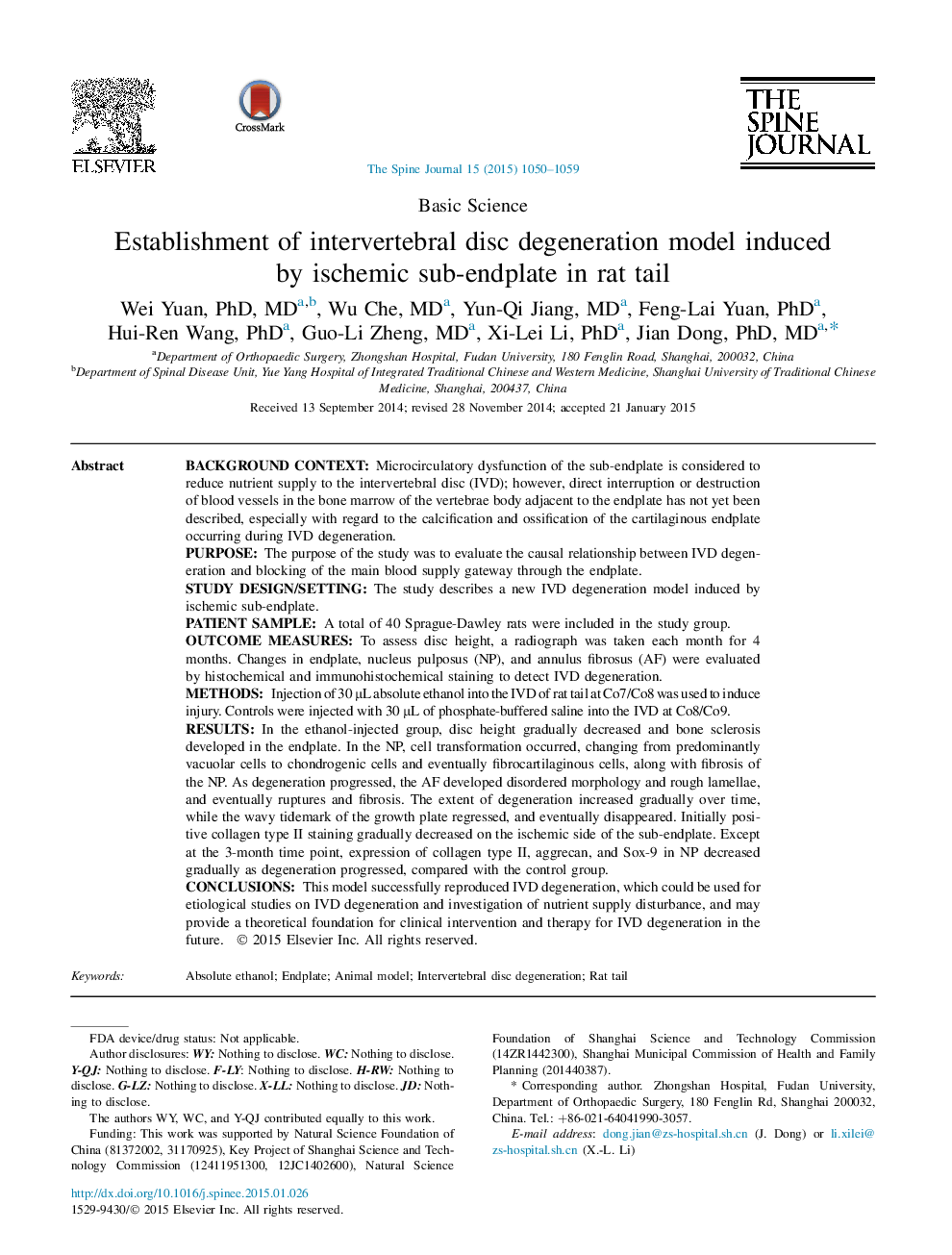| کد مقاله | کد نشریه | سال انتشار | مقاله انگلیسی | نسخه تمام متن |
|---|---|---|---|---|
| 6212048 | 1268563 | 2015 | 10 صفحه PDF | دانلود رایگان |
Background contextMicrocirculatory dysfunction of the sub-endplate is considered to reduce nutrient supply to the intervertebral disc (IVD); however, direct interruption or destruction of blood vessels in the bone marrow of the vertebrae body adjacent to the endplate has not yet been described, especially with regard to the calcification and ossification of the cartilaginous endplate occurring during IVD degeneration.PurposeThe purpose of the study was to evaluate the causal relationship between IVD degeneration and blocking of the main blood supply gateway through the endplate.Study design/settingThe study describes a new IVD degeneration model induced by ischemic sub-endplate.Patient sampleA total of 40 Sprague-Dawley rats were included in the study group.Outcome measuresTo assess disc height, a radiograph was taken each month for 4 months. Changes in endplate, nucleus pulposus (NP), and annulus fibrosus (AF) were evaluated by histochemical and immunohistochemical staining to detect IVD degeneration.MethodsInjection of 30 μL absolute ethanol into the IVD of rat tail at Co7/Co8 was used to induce injury. Controls were injected with 30 μL of phosphate-buffered saline into the IVD at Co8/Co9.ResultsIn the ethanol-injected group, disc height gradually decreased and bone sclerosis developed in the endplate. In the NP, cell transformation occurred, changing from predominantly vacuolar cells to chondrogenic cells and eventually fibrocartilaginous cells, along with fibrosis of the NP. As degeneration progressed, the AF developed disordered morphology and rough lamellae, and eventually ruptures and fibrosis. The extent of degeneration increased gradually over time, while the wavy tidemark of the growth plate regressed, and eventually disappeared. Initially positive collagen type II staining gradually decreased on the ischemic side of the sub-endplate. Except at the 3-month time point, expression of collagen type II, aggrecan, and Sox-9 in NP decreased gradually as degeneration progressed, compared with the control group.ConclusionsThis model successfully reproduced IVD degeneration, which could be used for etiological studies on IVD degeneration and investigation of nutrient supply disturbance, and may provide a theoretical foundation for clinical intervention and therapy for IVD degeneration in the future.
Journal: The Spine Journal - Volume 15, Issue 5, 1 May 2015, Pages 1050-1059
